1951 death of Albert C. Barnes
Maria Bottero
THIS ISSUE
This issue [Zodiac 17, 1967], although dedicated wholly to the U.S.A., certainly does not pretend to offer a panoramic relation of the architectonic-town-planning culture of this country. A glance through the index should suffice to reveal the partiality of the themes dealt with. Architecture: a re-reading of Wright; an attempt at bring the personality of Kahn into focus; the illustration of works and projects by young architects who feel themselves to be particularly indebted to the teaching of Louis Kahn. Town-planning: some approaches to the problems of urban renewal, with reference to planning and design methods. Just a few threads then, picked up half casually, half intentionally, (I say this, because one term always implicates the other) in the hope of piecing together some indications of a cultural reality which by now is of concern not only to America but to the whole world, just as the assassination of Kennedy, the policies of Johnson, the attitude towards the afro-asian continents and the racial and census problems of the negro minority and the poor are problems of international significance. I am in agreement in fact, in a certain sense, with Vincent Scully that America is today, an exemplar of experimentation and theorization of the future: in the sense, that is, that facts determining our destiny, take place there.
For what is of particular concern to modern architecture, I consider Louis Kahn is a central figure: it is to him in fact that this issue is mainly dedicated. I have tried, as far as means and material available allowed, to use photography not as an inert didactic means of reference to architecture, but rather as an eloquent image in itself , or in a series of montage. Architecture is not in fact merely an argument for learned dissertations on the part of professors and scholars: it is before all else, matter for direct experimentation, power and concreteness of the image. An architectural review ought therefore to avail itself of the sequence or montage of images (bordering ideally on a kind of motion picture sequence) critically eloquent of the architectural fact under examination. I am well aware that results obtained here are modest, or at any rate not on a scale in keeping with such an ambitious discourse but that the goal still lies ahead. This is no way detracts from what has been said. And already I foresee the objections of the pedants: architecture is not an art to be savored in images; it is instead the product of--or the proposal for a modification of--particular economic-social conditions. The slums, the expanding population to house decently, traffic, mass housing etc... these are the real problem! I would not deny that these are enormous problems, but (and here I am in agreement with Crane) I do deny that architecture or design as aesthetic appreciation or as significance of image, is only an extra luxury, something which lies outside these same problems. When therefore I am told, that Kahn ought to occupy himself with mass housing instead of with a few elaborate and incomprehensible buildings, I reply that what Kahn has brought about in architecture today, is as revolutionary as the theory of Copernicus, and that just as the world no longer lies at the centre of the universe, so the architect is no longer at the centre of the architecture that he however produces, the complex laws of consistency and gravitation of which would be worth studying, even indeed particularly. through the images of works realized by Louis Kahn.
I am indebted to: Luisa Castiglioni, Hans Deichmann, Enzo Muzii, Umberto Riva, for the essential photographic contribution. I would like to express my thanks to Louis Kahn for the assistance given me in gathering together documents concerning his work. Finally, may I thank Romaldo Giurgola for the precious editorial collaboration carried out in America.
| |
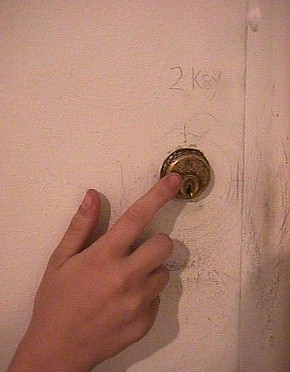
It takes '2 key' to open Étant donnés' back door.
...in Philadelphia, where, by the way, the Benjamin Franklin Parkway matches exactly the long axis of Piranesi's Ichnographia Campi Martii, with the Philadelphia Museum of Art at one end matching the Nymphaeum Neronis, Logan Circle at the middle of the Parkway matches Hadrian's Tomb, and the tiny intercourse building at the other end matches the location of the Robert Indiana LOVE sculpture at the entrance to JFK Plaza.
Since it's inception in the early 1920s, the Benjamin Franklin Parkway was seriously considered a reenactment of the Champ Elysees from the Tuileries to the Arc de Triomphe. The Free Library and the Court House on Logan Circle even reenact the Palaces at the Place de la Concorde. I have never come across any reference comparing the Benjamin Franklin Parkway and Piranesi's Campo Marzio, but, who knows, maybe the Champs Elysees was somehow inspired by Piranesi's plan.
ps
Even a "law of silence" was reenacted today: architecthetics post.
Day eleven of the EPICENTRAL BIENNIAL and counting.
| |
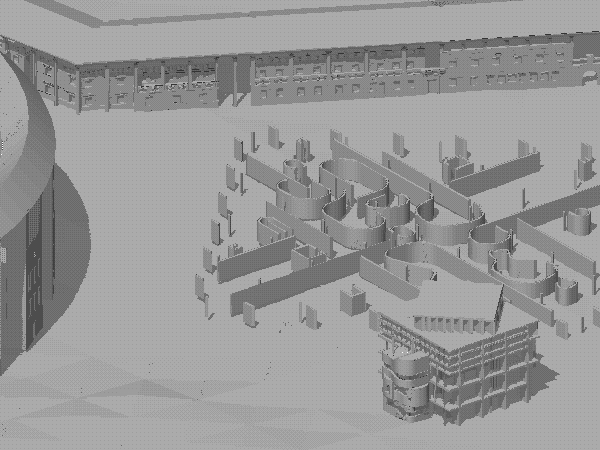   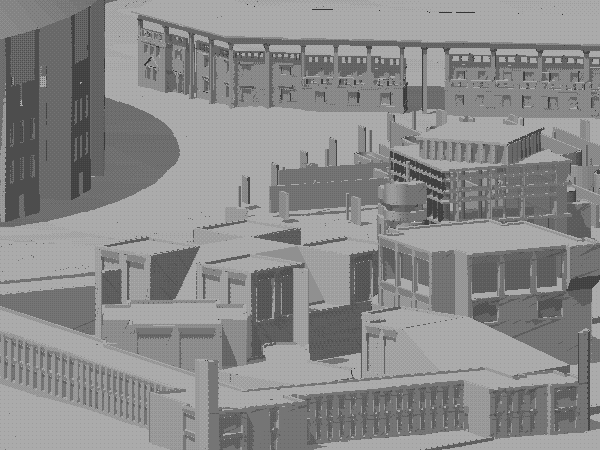 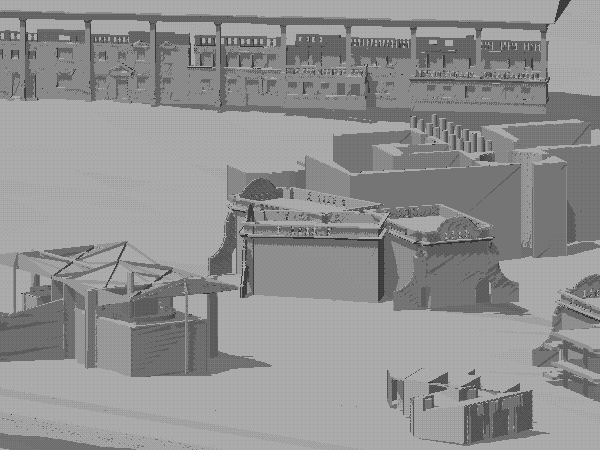
| |
 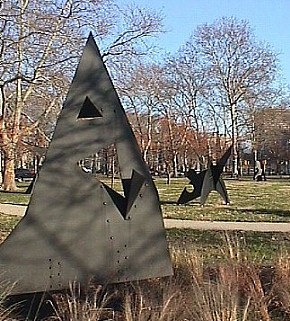
So maybe there really is a Calder Museum of Virtual Architecture.
[Last year] about a half mile into my exercise walk this morning, I looked up and was surprised to see the path abruptly end in a great mass of foliage. It's the same path I take everyday, basically walking through the woods along Pennypack creek, but today I was also deep in thought about what I read last night, and instinctively mostly looking down at the path for the occasional debris there since the last rain storm. In a truly uncanny way, immediately upon perceiving the path ending in a great mass of foliage, my mind told me I was suddenly in a[n]... endoscopy center
|